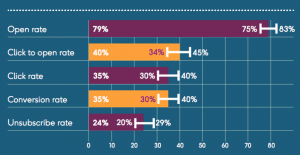The New Gmail: What Will The Redesign Mean To Email Marketers?
It may be hard to assess a change that is now only a rumor. But email professionals seem happy about the reported Gmail redesign.
“The details are still trickling out and we’d hate to speculate before there’s official word,” says Roger Barnette, CEO of MessageGears. “But, as always, we know Google will be putting users first in whatever they plan. Brands would be well advised to do the same.”
Matt McGowan, president of Adestra and a Xoogler, or ex-Googler, agrees.
“Better experience usually leads to increased engagement, and that is a good thing for email marketers globally,” he says.
McGowan adds: “The fact that Google is bringing snooze, offline support, smart replies, and a choice of interface design to Gmail users is fantastic and only continues to stress the importance of email in the consumer’s everyday life.”
A similar view is held by Brady Edwards, director of customer solutions at email deliverability company 250ok.
“This is based on rumors, and most likely one or two of them are not going to be true,” Edwards laughs. But he adds that the rumored changes are good ones.
Take the expected graphical change: “Words are going away, and they’re going to icons. That aligns with who we are as individuals — we like to see things short and simple, as with brand logos.”
Then there are user capabilities such as snooze email and smart reply. “I see myself using those on a daily basis,” Edwards says. “An email comes in, and you may want to think about it.” The feature reportedly would allow you to put messages aside, only to be reminded of them later.
Then there is Confidential Email, a feature that, as some headline writers put it, allows emails to self-destruct. This would be useful “when we send proposals in a sales organization that we don’t want to be outside of their network or their world,” Edwards says.
In addition, email marketers may use this function when sending short-term promotional offers — those with deadlines. But Edwards asks, “have they thought through all the email use cases?”
For one thing, emails outside of Google’s control — say, those sent via Microsoft or Yahoo Mail — will not have these same capabilities, or least not until those providers offer similar capabilities.
“Once it’s outside their walls, it’s going to be nearly impossible to control how and what the platform does with the message,” Edwards says.
Then there’s the question of whether Google is trying to take over the world. Edwards doesn’t think so. “Gmail owns the majority of inboxes in the world now. But they’re not trying to become the sole monopoly — they’re giving users a fresh look, with more functionality.”
We’ll check back in May.
(65)
Report Post



